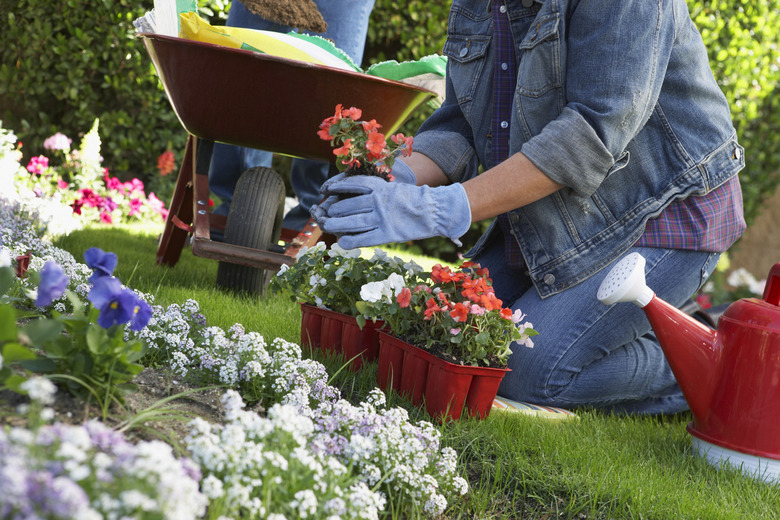How Soon Can You Replant After Using Roundup?
When you need a simple and fast-acting solution for weeds in your yard, the herbicide Roundup is up to the task. Replant times after treatments vary from three to seven days, depending on the product you use and the type of plants you're planting.
When you need a simple and fast-acting solution for weeds in your yard, the herbicide Roundup is up to the task. Replant times after treatments vary from three to seven days, depending on the product you use and the type of plants you're planting. Roundup's active ingredient, glyphosate, is a nonselective herbicide that kills all living, leafy plants and roots that it touches.
Wait for It
Always choose the appropriate Roundup product for your needs and read the label carefully. If you used Roundup Weed Grass Killer products, wait a minimum of three days before planting ornamental flowers, herbs, fruits, vegetables or woody plants. If you used Roundup Weed & Grass Killer products and you plan to lay sod, wait three days or wait at least seven days if you're reseeding the lawn.
After the Treatment
Roundup's active ingredient, glyphosate, breaks down in the soil or in dead plants and becomes inactive. Waiting seven days allows time for the roots to die and gives you time to watch for regrowth of the weeds you're trying to kill.
- When you need a simple and fast-acting solution for weeds in your yard, the herbicide Roundup is up to the task.
- Waiting seven days allows time for the roots to die and gives you time to watch for regrowth of the weeds you're trying to kill.
Replant After Using Roundup?
If you need to clear a grassy or weedy area in your yard before you plant a garden, Roundup herbicide may be the solution. However, Roundup, which is manufactured by the Scotts Miracle-Gro Company, is available in different formulations. The primary herbicidal compound in Roundup is glyphosate, which has the chemical name N-(phosphonomethyl) glycine. Glyphosate kills most plants it touches, so even non-targeted plants may die if Roundup drips onto them or if the wind blows it to surrounding vegetation. If you're planting ornamentals, shrubs or trees in a Roundup-treated area, you may plant them the next day after applying these specific products: Roundup Weed & Grass Killer Ready-to-Use Plus, Roundup Weed & Grass Killer Concentrate Plus, Roundup Weed & Grass Killer Super Concentrate and Roundup Weed & Grass Killer Sure Shot Foam. This allows the glyphosate in Roundup to reach the roots and kill the plant completely. Follow safety precautions on all Roundup labels; keep pets and children out of the treated area until dry.
- If you need to clear a grassy or weedy area in your yard before you plant a garden, Roundup herbicide may be the solution.
- Glyphosate kills most plants it touches, so even non-targeted plants may die if Roundup drips onto them or if the wind blows it to surrounding vegetation.
